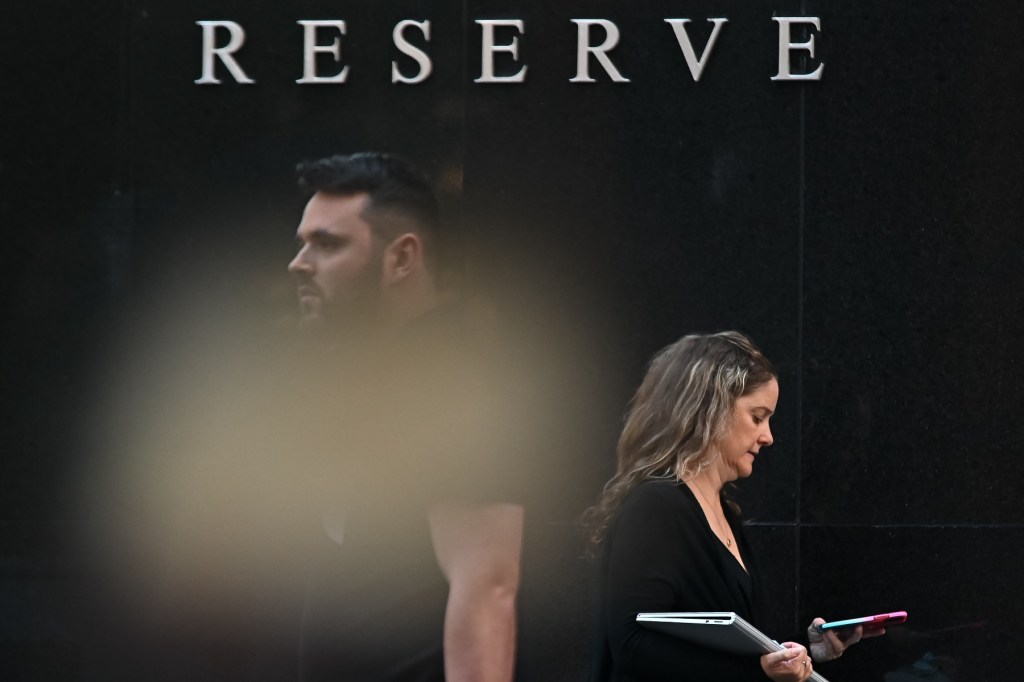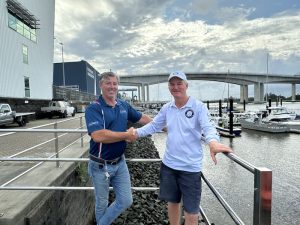The age of free returns is over as online retailers recoup more delivery costs

- by Admin
- August 20, 2024
Since it launched as a side hustle 10 years ago, Curvy has been giving online shoppers a flat rate of $8.99 for online delivery and free shipping on all orders over $99.
Now, as the plus-sized lingerie website battles its toughest year yet and its own shipping costs rise, founder Wesley Blundy is thinking seriously about hiking Curvy’s delivery charges.
“It’s probably time,” he said.
“We need to crunch the numbers. But probably [we’ll raise the threshold for free deliveries] to $120 or $130, which means customers are buying two to three bras to get free shipping.”
Curvy isn’t the only online website pulling back on delivery incentives, with fewer retailers offering free shipping compared to six years ago.
Data from Shippit, a tech company that works with Australia’s biggest online retailers, shows only 70 per cent of companies are offering free deliveries today compared to 81 per cent in 2018.
Shippit’s data also shows that free shipping thresholds have soared 100 per cent in five years.
“Online retailing has moved from a luxury to a necessity for a lot of people,” co-founder Rob Hango-Zada said.
“And a lot of retailers have found how unsustainable it is to give away everything for nothing.”
While retailers are upping free shipping thresholds, the delivery costs for purchases underneath these barriers aren’t spiralling, Shippit’s data shows.
The average shipping charge has risen below inflation from $9 to $10.26 in five years.
Retailers are also under-promising and over-delivering on delivery times, with estimates rising significantly to five years, but actual delivery rates dropping to 48 hours.
Mr Hango-Zada said retailers are doing this because they got bad press during the pandemic for late deliveries, and have learned that it is better to under promise and over deliver.
“Retailers are conservatively baking in any delays, so they don’t disappoint the customer,” he said.
The big names changing their delivery costs
Australian fashion website The Iconic, department stores Myer and David Jones, and discount chain store Chemist Warehouse are just some of the retailers that have upped delivery costs or free shipping thresholds in the last two years.
Online giants like Amazon and Kogan have also been upping the prices of so-called subscription services that give shoppers access to unlimited free shipping.
Kogan raised its annual rate from $99 to $129 in April as its own company results for the June quarter showed it was returning to revenue growth.
Meanwhile, Temple & Webster’s recent full year results show it battled a rise in distribution costs from $7.3 million to $8.6 million in the last financial year.
It has projected its margin after distribution costs could even fall next financial year, from 31.6 per cent down to 30 per cent.
“A lot of online retailers have really had to rethink their business model,” retail stock analyst Craig Woolford told the ABC.
“Profitability hasn’t been great, and one of the key costs that an online retailer has, that a retailer [with physical stores] doesn’t, is the delivery cost.
“So, we’ve seen those delivery free thresholds ratcheted up. We’ve seen retailers rethink what proposition they have for delivery.”
Retailers with physical stores are also trying to get around shipping costs by offering other alternatives.
The number of brands providing click and collect services – where online shoppers drive to an outlet to pick up their package – soared by more than 300 per cent during the pandemic, according to Shippit’s data.
However, the strongest trend is perhaps the tech company’s data on free returns, which has sharply declined in recent years.
Five years ago, one in two retailers were covering the shipping costs of their customers when they wanted to return an item.
That number is now below 20 per cent.
“We’ve seen a massive plunge in retailers offering free returns. And that’s a trend that’s across industries,” Mr Hango-Zada said.
“The cost of a return is actually quite significant for a retailer.
“Depending on the industry that you’re in, it could be quite a big cost for your business.
“If we take fashion and apparel as an example, you’re looking at return rates that could be as high as 30 per cent.”
Rob Hango-Zada is the Shippit chief executive. (ABC News: John Gunn)
UK fashion website Asos notably ended free returns for change-of-mind purchases in 2023, raising the price to $8.99.
Sustainability experts applauded Asos’ decision, arguing that free returns had long been incentivising people to buy on a whim and return what they didn’t want, which wasted plastic packaging and fuel.
One example Mr Hango-Zada pointed to was the trend of “wardrobing”, where customers buy multiple sizes in one item to find the right fit and then return the ones that don’t.
Many fashion retailers also gripe that customers wear an item for an special event and return it, hoping the smell of aftershave or a smear of makeup will go unnoticed.
“This has a double whammy effect on a retailer,” Mr Hango-Zada said.
“Not only are they paying for the shipping out to you and the shipping back – if they offer free shipping and free returns – but the time that that product is with you, is actually dead time [since] they can’t sell it to anybody else.”
Asos did not respond to the ABC’s queries.
Who is to blame for rising shipping costs?
Back at its small warehouse in Sydney, Curvy has already axed free shipping on returns for change of mind.
Curvy has already axed free shipping on returns for change-of-mind purchases. (ABC News: John Gunn)
“It used to be free returns on everything,” Mr Blundy said.
“Now we offer free postage if you want to exchange it for another one. So that’s been a bit of a compromise we’ve made.”
In an area of retail where good fit is everything, Curvy brought in a free online bra fitting service, which it thinks helped dropped its returns rate down to eight per cent of all orders.
Mr Blundy, who started his business after realising bigger-busted people weren’t being offered enough range, said the toughest thing about his business’ logistics is the disparities in weight that can impact postage.
For instance, a size 6D will cost Curvy about $8 to $9 to ship, under its contract with Australia Post.
Yet, anything over 500 grams enters a different pricing arrangement, meaning a bra with much more fabric, like a 28N, could soar to three times that price, especially if it is going to a regional area, Mr Blundy said.
“We’re certainly not going to charge anyone any different [postage] just based on the size they wear,” he said.
“As a body-positive, size-inclusive retailer, it would be against our whole philosophy.
“Our challenge is to look at innovative packaging and different carriers to try and work to get that cost down.
“Australia post is a really tricky partner over the years. When we were small, the message we got from them is we need to grow our volume to get better rates.
“Subsequently, we grew our volume by tenfold, and our rates went up. So that was really disappointing.
“I think they have somewhat of a monopoly in the regional areas.”
Fashion brands are trying to tackle the environmental impact of online shopping.
(ABC News: John Gunn)
As a result, Mr Blundy said they have started using more courier services, including Toll Express, but he would “love to see more competition”.
Australia Post said the latest price change for sending domestic parcels saw an increase of 2.5 to 3.5 per cent, well below current inflation levels.
“Australia Post is a completely self-funded business,” a spokesperson said.
“Prices are reviewed annually and Australia Post carefully considers the impact of any changes on our customers.
“We also work with customers to ensure they are using our services in the most efficient way.”
The Latest News
-
December 25, 2024Australia to bat first at MCG in Boxing Day heat
-
December 25, 2024Golf Participation in Australia Hits New Heights – APGC
-
December 25, 2024Boxing Day Test: Australia batting first against India
-
December 25, 2024Live: Fearless Konstas makes wild start to Test debut as Australia bats first at MCG
-
December 25, 2024Boxing Day Test 2024: Australia vs India fourth men’s cricket Test, day one – live updates



